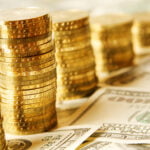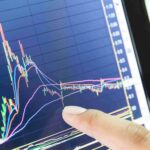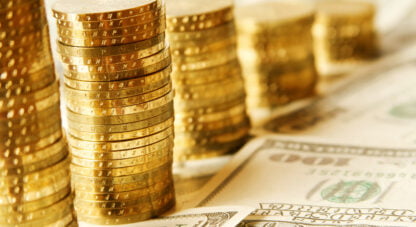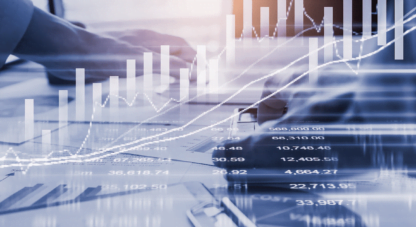European Gold Coin Rare Market
McAlvany Intelligence Advisor
There’s a major new market developing before our eyes. Well, actually it’s not new at all, but the interest that it is receiving from the investment community is beginning to be significant. It really can’t be called a “new†market, because the products have been around for between 100-700 years. I’m referring to the European gold coin market. More specifically, I’m referring to the rare European gold coin market.
As most of you know, my company, International Collectors Associates, has been “out in front†of the fractional European gold coin market for over a decade. We have had the privilege of bringing over a million gold coins from over 12 countries to the market over the past number of years. The advantages of these beautiful uncirculated gold coins over U.S. bullion coins have been well documented in our literature. While European Central Banks were divesting themselves of their gold coin hoards, we eagerly and aggressively offered then to our investors. As gold climbed from $250 to $650 ounce, we made our investors very happy.
Being entrenched in the European market over the years has brought another amazing opportunity to our attention. Although we have been admittedly very resistant to investing in most U.S. rare coins (we have certainly had our reasons, which I will outline below), I am now completely convinced that tremendous value and opportunity lies in their European counterparts.
LET ME EXPLAIN.
As recently as 1970, an astute investor could have bought premium U.S. rare coins at remarkably low prices. The industry was still collector oriented. There was little to no investment interest in coins:
- 1. Obtaining sufficient information on the availability of coins was difficult at best. Communication was very limited.
- 2. Everything moved in slow motion. Price guides were published infrequently. Current information was rarely available.
- 3. Disposable income was not plentiful, but was beginning to increase.
- 4. There was no way for an inexperienced investor to correctly determine the grade (condition) of a coin. Since price and value are determined by condition, a prospective investor needed to be his own expert, or trust someone who obviously had a conflict of interest – the very dealer selling the coin.
- 5. Liquidity on a rare coin was very limited. Communication to prospective buyers was extremely difficult and very slow (if, in fact, one even knew how to contact buyers). It might take many months, if not years, to properly liquidate a rare coin for the appropriate value.
- 6. Prices were difficult to determine accurately – again because of ambiguous grading and lack of sufficient information.
Then came a revolution in the U.S. coin markets. Aided by the runaway inflation of the late ‘70’s, tangibles of all kinds enjoyed strong markets, but coins particularly so. Although precious metals were driving the price of gold coins up, there were many other factors that contributed to the soaring prices of U.S. coins. In fact, some prices literally increased 10 to 100 fold!
The greatest impact on the U.S. coin market was the entrance of investors. Seasoned investors understood the rarity, art, and potential price appreciation that the coin market represented. They also understood the satisfaction of owning something scarce, rare, or even unique. The U.S. coin market particularly rewarded those who bought rarity (low populations) and high grades (among the finest known).
But what factors enabled investors to enter a market that they once avoided because of so many pitfalls?
- 1. The advent of 3rd party grading. Without question, the premier grading services (PCGS and NGC) forever changed the coin market. Investors no longer had to rely on a biased coin dealer, they now had assurances that they didn’t have previously. Condition was no longer as ambiguous, and pricing, which was totally dependent upon grading, became far more objective than subjective.
- 2. Liquidity was greatly enhanced. Many rare coins are best sold through auctions, and the auction market is far more sophisticated than it used to be. Not only are there many more auctions than before (at least one every week), the technological improvements are staggering.
- 3. Information is now readily available. The internet has changed the world, making it possible to find out about any subject – including coins. There is also now a host of coin periodicals and price guides.
With so much going for the rare coin market, one might wonder why I have been reluctant to recommend truly rare coins before now. The answer is pretty simple. The bloom was already somewhat off the rose. It was important to be in the U.S. coin market early – by that, I mean by the mid 1970’s. Granted, prices might still appreciate, but not at the remarkable rates that they once did.
So why would I now be willing to recommend rare European gold coins as investments? Again, the answer is pretty simple. I believe they are currently poised to repeat the pattern of the U.S. rare coin market when prices literally took off. There are some very compelling reasons that I believe this:
- 1. Many European coins are now being graded by third party graders. NGC and PCGS are both very active in the foreign coin markets, removing the mystery of grading and condition for potential investors. There is also now a respected 3rd party grading company in England which will only help to stimulate coin investing abroad.
- 2. There is real liquidity. Not only are more and more people becoming interested in this market, more and more auctions and coin shows are featuring foreign coins.
- 3. The strength of the Euro and the vast increase in disposable income in Europe is creating many wealthy would-be coin investors.
- 4. Foreign gold coins prices are ridiculously undervalued compared to their U.S. rare coin counterparts. In most cases, their values are about 10-20¢ on the dollar compared to equivalent U.S. coins.
- 5. Europeans understand investing in art and rarity (old master paintings approaching $100 million) – they simply needed the information and assurances that the coin market now offers them.
- 6. Timing – the timing is right. The most profitable percentage move in U.S. coins came in being invested early. I believe we only have several years to position ourselves before this collector market becomes an investor market.
- 7. There are extraordinary values available. High grade, low population, even proof gold coins can still be purchased for what seems like pennies on the dollar. Their U.S. equivalents have long since been snapped up and their prices driven through the roof.
- 8. Most European gold coins are actually much older and more historically significant than U.S. coins. The U.S. is a very young country compared to European nations – and so are its coins. Many European gold coins are older than U.S. gold coins by centuries, not merely by years. Their age and history make them imminently collectible.
- 9. Those who are already investing in our Legacy Collection Coins have a head start on their portfolio. The major difference to our past offerings is the individual nature of each of these coins.















